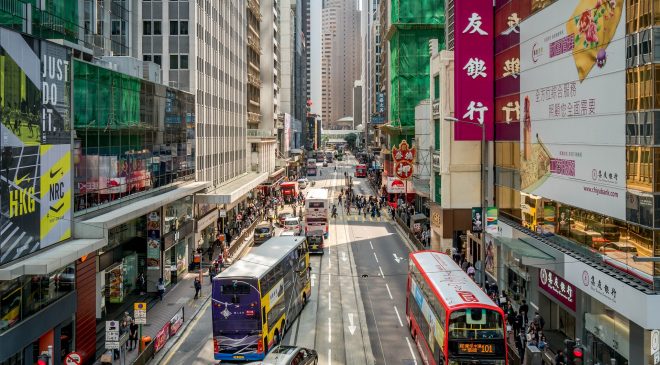
Lin Weiqiao, JP, Government CIO Hong Kong made a speech at the Beijing-Hong Kong Information Service Industry Cooperation
With the advent of the era of big data, the country has upgraded the development and application of big data as a national strategy as early as 2015.
According to the “Research Report on China’s Big Data Market Prospects and Investment Opportunities”, Beijing has been vigorously developing the big data industry in recent years, determined to become a leading domestic and world-class innovation center for big data and cloud computing.
Another research organisation International Data Corporation (IDC) reports that the overall revenue of China’s big data-related market will reach US$10.42 billion in 2020. It is predicted that China’s big data-related technology and service market will achieve 19 per cent in 2020-2024. The compound annual growth rate is leading the global big data market.
The 2020 China Big Data Industry Development Index released by the National Engineering Laboratory of Big Data Analysis and Application Technology of Peking University just last month (October 2020) shows that Beijing’s big data industry ranks first among 134 cities in the country.
Hong Kong is also actively promoting the widespread application of big data technology. The SAR government is determined to develop innovative technologies and, through the application of new technologies, optimize public services in a data-led manner. I will offer a few examples to share with you. In terms of epidemic prevention and anti-epidemic, the Office of Information Technology, the logistics and supply chain multi-technology research and development centre, the Hong Kong University of Science and Technology and the Hong Kong Science Park, a start-up company Suishang Technology Co., Ltd., jointly developed the “Safety and Anti-epidemic” application, using big data , Artificial intelligence and geo-fencing technology to detect changes in the wireless signals (including WiFi, Bluetooth, GPS, and telecommunications signals) sent by people undergoing home quarantine at the place of residence, thereby creating an invisible fence to keep the quarantined people Location.
OGCIO also launched a new generation of government cloud platform and “big data analysis platform” in September this year, providing big data analysis and artificial intelligence identification tools, parallel computing management systems, etc., to help various government departments to implement more quickly and effectively Big data analysis project. We are working with the Transport Department to actively promote the “Smart Mobility” plan, using big data analysis technology to develop a new “traffic data analysis system” to analyse various types of traffic and transportation data (including traffic flow, average vehicle speed, travel time, etc.) Data) and calculate the impact of different past situations such as severe weather and traffic accidents to assess the traffic situation and provide real-time advice to assist the government in making appropriate responses and plan travel arrangements for the public more accurately.
Technological talents are the key to the development of the widespread application of big data in society, industry and commerce. In addition to cultivating talents by offering big data and artificial intelligence-related courses through universities and colleges, the SAR government also implemented the “Hong Kong Talent List” and the “Technology Talent Admission Scheme” in 2018, including artificial intelligence and data science talents. The plan aims to more effectively expand the new technology talent pool needed by Hong Kong, to cope with the high value-added and diversified development of the Hong Kong economy.
We are also actively promoting the application and development of big data and artificial intelligence in the Greater Bay Area. Through the “Guangdong-Hong Kong Informatization Cooperation Task Force” (task group) that has been cooperating with the Guangdong Provincial Department of Industry and Information Technology for many years, we have strengthened the application and cooperation between Guangdong and Hong Kong in the new generation of information technology such as big data and 5G to create Smart City Cluster in the Bay Area.
The task force promoted the establishment of the Guangdong-Hong Kong-Macao Big Data and Artificial Intelligence Industry Alliance in August 2019 by nine industry organizations in Guangdong, Hong Kong and Macao. In addition, in 2018, the Chinese Academy of Sciences (Chinese Academy of Sciences) and the Hong Kong Special Administrative Region Government signed a memorandum on the establishment of an affiliated institution of the Chinese Academy of Sciences in Hong Kong, the “Hong Kong Institute of Innovation, Chinese Academy of Sciences” (Hong Kong Institute of Innovation, Chinese Academy of Sciences).
The Hong Kong Institute of Innovation, Chinese Academy of Sciences has now completed registration and is under construction. I am grateful to the Chinese Academy of Sciences for this important initiative to support the construction of technological innovation in the Guangdong-Hong Kong-Macao Greater Bay Area.
Through the physical platform of the Hong Kong Institute of Innovation of the Chinese Academy of Sciences, in accordance with the needs of the technological development of the Hong Kong Special Administrative Region, it has strengthened and strengthened cooperation in the fields of artificial intelligence, smart cities, and biomedicine. Hong Kong exchanges and cooperation.
Hong Kong’s mobile network operators have launched 5G services in April this year. The gradual popularisation of 5G in mainland cities and Hong Kong has brought more real-time data. I believe the industry elites in the two places will be able to make good use of these massive amounts of data and cooperate with them.
New technologies such as data analysis, artificial intelligence, and edge computing will open up more creative applications in different fields, such as telemedicine, driverless, smart manufacturing, to promote the development of innovation and technology and smart cities in the two places.




